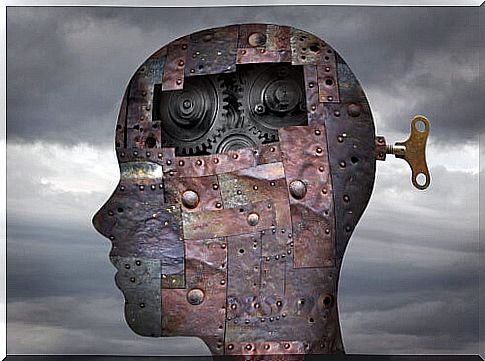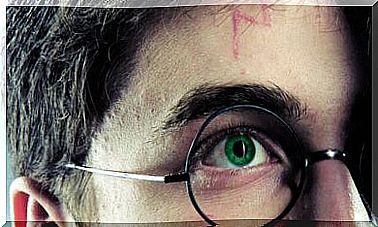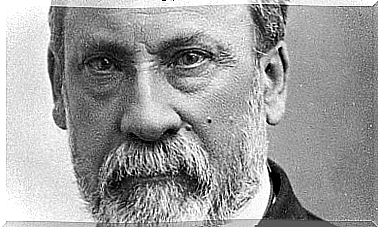Neurotic And Psychotic Defense Mechanisms

Defense mechanisms are automatic psychological processes. They protect the individual from anxiety or the perception of internal and external dangers or stressors. They mediate between the individual’s response to emotional conflict and internal or external stressors.
Although neurosis and psychosis have occasions to “coincide”, the mechanisms that control them are different. It is in their relationship with reality and the way they build it where their difference lies. Fantasy reigns in neurosis in response to a fixation point. In psychosis, a complete substitution reigns that seeks the restitution of what was denied at the beginning.
Self-neurotic defense mechanisms
Repression
Mechanism by which the I prevents the thoughts that generate anxiety from accessing consciousness. It is the most basic defense mechanism, for any other to occur, it must occur first.
Displacement
Substitute our true desire that causes anxiety and is intolerable towards another target that does not produce anxiety, but is acceptable. This mechanism can explain why we suddenly feel a phobia about something, for example if we feel dirty and we are ashamed to say it, we express our disgust and phobia of cockroaches.

Identification-based neurotic defense mechanisms
ID
It is a psychological process that consists of the tendency to increase feelings of personal worth by adopting the characteristics of someone admired.
Projective identification
Mechanism described by Melanie Klein that refers to the fantasies by which the subject introduces his own person or self (totally or partially) inside the object to control, damage or possess it.
Identification with the aggressor
Described by Anna Freud and Ferenczi, it consists of the subject introjecting some characteristic of the person that causes him / her anguish. Go from being the threatened individual to the threatening person.
Projection
Mechanism through which unrecognized characteristics are attributed and that cause anxiety to another person or object. This defense is present in psychosis, neurosis and perversion.
Introjection
Mechanism written by Ferenczi that consists of the attribution to oneself of the characteristics of others, without being elaborated or adjusted to the self. For example, a depressed person may incorporate the attitudes and sympathies of another person.
The “healthy” way to do this would be identification. Identification implies incorporating into my self the desirable things of another person. Introjection would be like “swallowing them without digesting them” resulting in an unintegrated self.
Defense mechanisms that are based on transforming the drive
Reactive training
Mechanism by which objectionable thoughts are repressed and expressed through their opposites. This defense mechanism would explain the mania, which would hide a repressed depression.
Substitution / substitute training
Mechanism through which a libidinal object is repressed and replaced by another more acceptable and conscious. Thus, in disguise, he can satisfy the forbidden pleasure. For example, someone who is repulsed by his partner, but cannot accept it, represses that emotion and expresses it in the form of an allergic reaction.
Sublimation
Mechanism that seeks to substitute an unacceptable object or activity for another that has a higher social or ethical value.
Rationalization
It consists of the rational justification of the thoughts or behaviors that produce anxiety. It differs from intellectualization in that it occupies a different place, it does not imply a systematic avoidance of affects, but it attributes more plausible than true motivations to them, giving them a rational or ideal justification.
Intellectualization
The individual tries to give a discursive formulation to his conflicts and emotions in order to control them. The emotional isolation that would normally accompany a painful event is combined with a rational explanation.
Defense mechanisms in which the drive is repressed or masked
Isolation
Mechanism by means of which an annoying representation of its affect is separated, remaining at a conscious level but deprived of all associative connection. For example, a child who has anxiety about being a victim of abuse, but is not able to see the relationship between the two.
Commitment training
It consists of a deformation of the repressed that can manifest itself in three ways: in dreams, in symptoms and in certain artistic productions.
Retroactive cancellation / cancellation
According to Freud, it is an active process consisting of undoing what has been done. The individual tries to pretend a thought or act had not occurred.
The transformation (of an impulse) into the opposite
It consists in the transformation of the end of the drive into its opposite. The end of the drive is transformed, not the object by which it is satisfied. For example, if my partner abandons me, my love for him turns into hatred. Towards the same object towards which I felt love, now I feel hatred. The drive has been transformed, but the object (my ex-partner) has not.

Self-psychotic defense mechanisms
Denial or Denial
According to Freud, this mechanism consists of eliminating an annoying representation not by erasing it (annulment) or refusing to know it as belonging to the individual (negation), but by denying the very reality of the perception linked to this representation.
Unfolding of the Self
It is a psychotic defense mechanism against dissociation and death anxiety. A part of the ego would remain in operative contact with the non-disturbing reality. The other part of the ego would lose all contact with this reality, rejecting all the too distressing aspects and, if necessary, reconstructing in compensation a new reality that is more reassuring and, at the same time, more desired (through delusion).
Unfolding of the imagos
It is the mechanism of the limit states that fights against the anguish of loss of object and removes annoying representations. For example, an individual who projects the bad part of his reality outside, but without losing contact with it. The split does not imply a loss of contact with reality.
Repudiation or Foreclosure
Foreclosure, a term used by Lacan to refer to exclusion, supposes the rejection of the primordial signifier in the constitution of the child as an individual differentiated from its mother. This condemns the child not to constitute himself as a subject within the pre-existing linguistic universe and predisposes him to psychosis.
Defense mechanisms are divided into different groups that are related to levels of defensive functioning. In neuroticism, these defense mechanisms are articulated as protectors against the non-tolerated reality, although they are still in connection with it.
In psychosis, however, the distressing reality is not tolerated in any way and the defense mechanisms are articulated leaving the person only in contact with the desired or imagined reality and without contact with the distressing reality to try to achieve stability in the emotions. Sometimes this emotional stability is achieved thanks to the construction of delusion.









